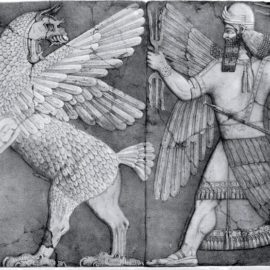

This article is an excerpt from the Shortform book guide to "Manufacturing Consent" by Edward S. Herman and Noam Chomsky. Shortform has the world's best summaries and analyses of books you should be reading.
Like this article? Sign up for a free trial here .
Who controls for-profit media outlets? Should big news companies be trusted?
For-profit media is by no means a new concept—it dates back to the 1800s. The problem is that for-profit media companies are taking over the smaller, independent news outlets, causing biased news coverage.
Here’s why for-profit media can’t be trusted, according to the book Manufactured Consent.
The Financial Incentives of the Media Business
Chomsky and Herman argue that the elite control of for-profit media has only grown stronger as media companies have merged into powerful corporate conglomerates, thereby reducing competition and giving powerful economic interests a strong incentive to control what the media reports.
The Rise of Mass Media
According to Chomsky and Herman, large, media conglomerates are a powerful filtering system for what does and doesn’t get reported. They argue that this censorship function of for-profit media can be traced back to the 19th century and the rise of the first mass daily newspapers in Europe and the United States.
During this era, the print news business began to grow increasingly profitable. This was in large part due to rising urbanization as a result of the Industrial Revolution, which consolidated potential subscribers into more geographically compact cities and large towns, where it was easier, more cost-effective, and more scalable to deliver newspapers than it was to sparsely populated rural communities. Likewise, rising literacy rates created vast new pools of potential customers.
In such a market, large, well-funded papers had an advantage because they could exploit economies of scale to print and distribute on a massive level at a reduced cost—thereby destroying their competition. Further, the large capital costs of starting a newspaper (requiring expensive printing equipment, materials, and buildings) created high barriers to entry, which made it difficult for upstarts to break into the market. Taken together, these economic forces gave a strong advantage to the wealthy interests that controlled the major dailies.
| Mass Media, Vernacular, and the Rise of the Nation-State Chomsky and Herman write that the rise of mass daily newspapers in the 19th century was a major factor in the consolidation of the media industry. But the growing power of mass media also helped to birth another major historical development—the rise of the nation-state as the dominant form of political organization in Europe. In Imagined Communities, Benedict Anderson writes that before the 19th century, most Europeans lived in sprawling, multi-ethnic polities like the Russian, German, and Austro-Hungarian Empires. These cosmopolitan states contained a multitude of different language groups and ethnic groups all living under the control of one ruler. But with the 19th century rise in urbanization and literacy, there was an explosion of newspapers, books, and pamphlets printed in local languages—as opposed to Latin, which had previously been the dominant language of print culture even though most people couldn’t read it. This development helped to dethrone Latin as the transnational language of European literature and written expression. With Latin no longer acting as a barrier to the written word, the mass public in countries from England to Sweden began to cultivate a new language-based identity and heritage. Gradually, the growth of a class of literate professionals able to consume news and literature printed in their own languages created new bonds and fostered an idea of nationhood—a community of people bound to one another by their shared recognition that they spoke, wrote, and thought in the same language. In particular, it was the demand created by the new print market that helped to forge these new linguistic identities. Beyond just printing in the vernacular, booksellers sought to appeal to their customers by printing works in standard or uniform versions of a vernacular language—rather than having to adapt each book to suit each local or regional dialect. By transcending local speech, Anderson argues that these new print cultures fused and cemented the idea of a unified national linguistic community. And this, in turn, facilitated the rise of mass media and major daily newspapers. The existence of a mass reading public that increasingly spoke and read standardized versions of national languages (as opposed to local dialects) helped to create the conditions under which large media outlets with the resources to achieve truly national distribution could thrive. |
Consolidated Media, Reduced Competition
Although the specific forms of media evolved as the 19th century gave way to the 20th and then the 21st century—from print to radio to film to television to online publications to social media—Chomsky and Herman argue that the power of media as a big business only increased as the industry became more concentrated.
The consolidation of media into a handful of outlets limits the range of voices and perspectives that are available to audiences and inherently biases those views toward those of the wealthy and powerful. For example, today, while anyone can start a small paper or blog, without serious financial backing, they will never come close to having the same audience share as large corporate outlets.
| Media Consolidation and the Nationalization of Local News The consolidation of media has a major impact on the news content that Americans consume. According to one study, local television stations in particular have become an attractive acquisition target for major media conglomerates—largely because local news programs attract a nightly average of 25 million viewers, dwarfing the viewership figures of even the largest cable networks like Fox, CNN, and MSNBC. Indeed, as of 2016, just five companies controlled 37% of the local television market. Researchers further found that the growing control of local news by major national corporations has shifted news content away from local stories toward more national ones and has given that content a more explicitly political bent. For example, in the case of Sinclair Broadcast Group (whose nearly 200 stations reach close to 40% of the US population), the nationalization of news coverage has gone hand-in-hand with a tilt toward the political right. Stations owned and operated by Sinclair have forced local anchors to read conservative-leaning political commentary, such as an on-air statement about the dangers of “fake news” that closely mirrored Trump’s attacks on the mainstream media. |

———End of Preview———
Like what you just read? Read the rest of the world's best book summary and analysis of Edward S. Herman and Noam Chomsky's "Manufacturing Consent" at Shortform .
Here's what you'll find in our full Manufacturing Consent summary :
- How the American media frames events and creates narratives that serve the elite
- How elites indirectly censor media and avoid censorship laws
- Why corporate media outlets value profit above truth or news value






